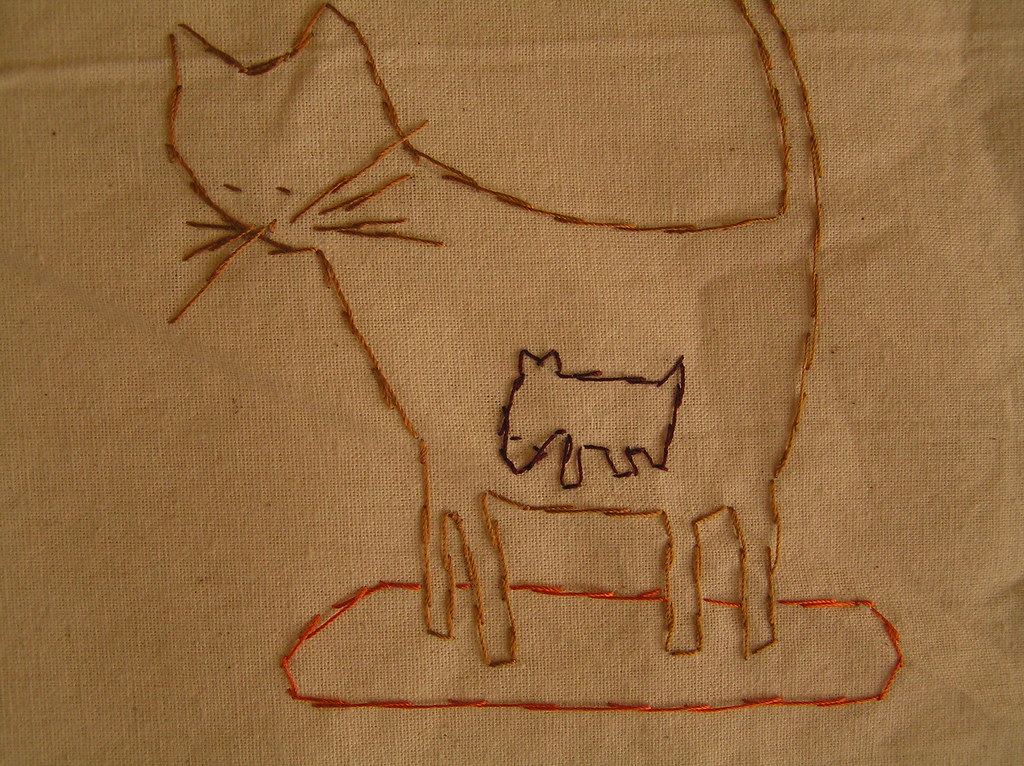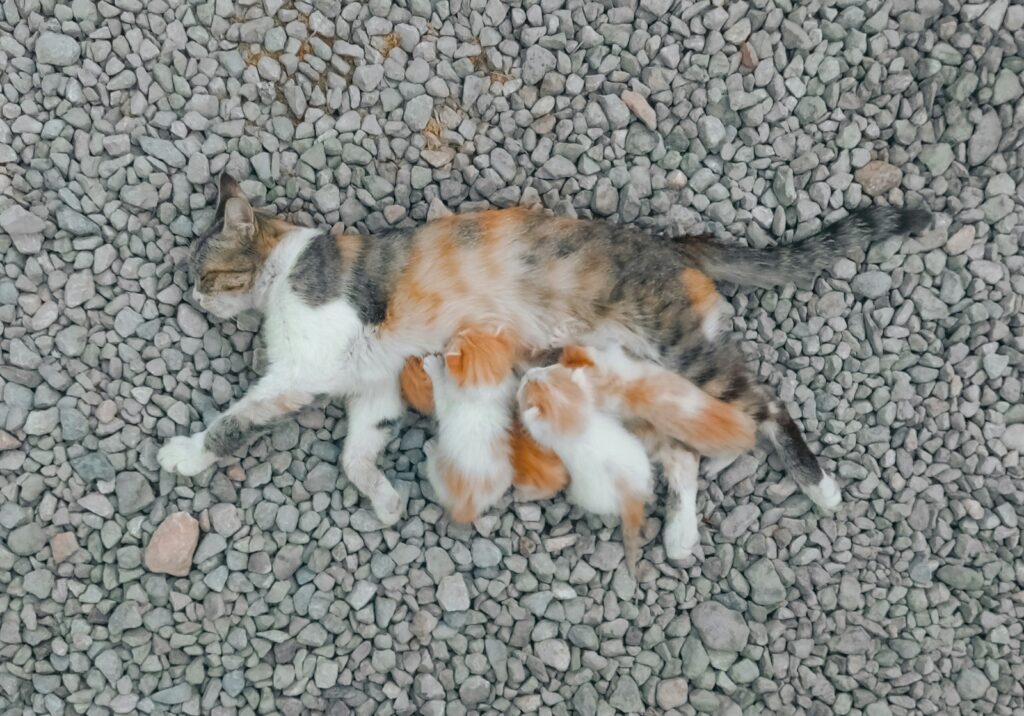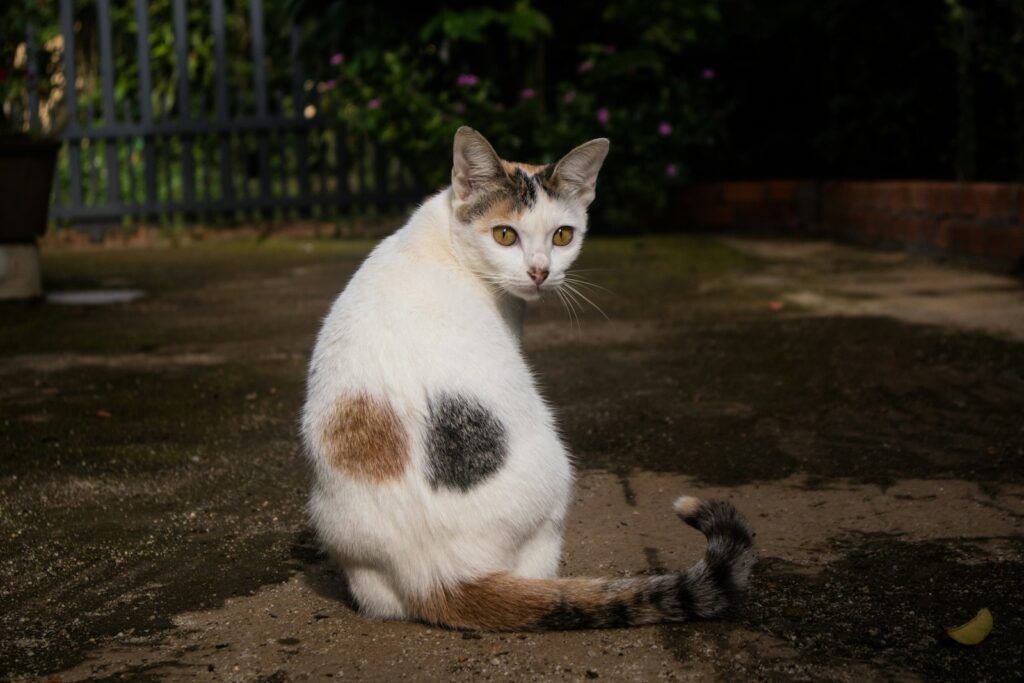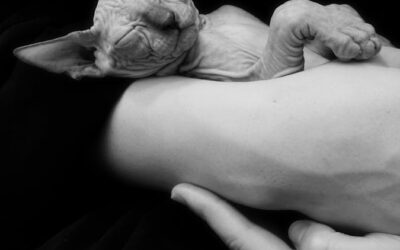Discovering that your female cat is pregnant can be both exciting and overwhelming. Whether you’re a first-time cat owner or experienced with felines, understanding the cat gestation period is crucial for ensuring a healthy pregnancy and birth. Most cats are pregnant for approximately 64-67 days, but there’s much more to know about this fascinating process.
This comprehensive guide will walk you through everything you need to know about cat pregnancy, from the early signs to preparing for birth and caring for newborn kittens.
Understanding the Cat Gestation Period
The cat gestation period typically lasts between 58-72 days, with the average being 64-67 days (roughly 9 weeks). This timeframe can vary slightly depending on several factors, including the cat’s breed, age, and individual health conditions.
Unlike dogs, whose pregnancy duration varies significantly by breed size, cats maintain a relatively consistent gestation period regardless of their breed. A tiny Siamese will have approximately the same pregnancy length as a larger Maine Coon.
[divilifeshortcode id='7986']
Factors That Affect Pregnancy Length
Several elements can influence how long cats stay pregnant:
- First-time mothers: Young cats experiencing their first pregnancy may deliver slightly earlier or later than the average timeframe
- Litter size: Larger litters sometimes result in shorter pregnancies, while smaller litters may extend the gestation period
- Breed variations: Some breeds show slight variations, though these differences are typically minimal
- Health conditions: Overall maternal health can impact pregnancy duration
- Environmental stress: High-stress environments may affect the timing of birth
Early Signs Your Cat May Be Pregnant
A few more clues of pregnancy in your female cat is essential for providing proper care. These symptoms typically appear within the first few weeks after conception.
Physical Changes
- Notable weight gain: When a cat is pregnant, she will begin showing weight gain after about three weeks. The cat’s belly will gradually become more rounded and firm to the touch.
- Changes to the nipples: One of the earliest signs is that the nipples become pink and enlarged. Notable weight gain, pink swollen nipples that usually occurs around 2-3 weeks into pregnancy.
- Morning sickness: Just like humans, pregnant cats may experience nausea and vomiting during the early stages of pregnancy, typically in the first few weeks.
Behavioral Changes
- Increased affection: Many pregnant cats become more affectionate and seek extra attention from their owners.
- Nesting behavior: As the due date approaches, your pregnant queen may start looking for quiet, comfortable spaces to create a nest for her upcoming litter.
- Changes in appetite: Pregnant and lactating cats require more nutrition, so you may notice increased hunger, especially in the later stages of pregnancy.
Confirming That Your Cats Pregnant
If you suspect your cat may be pregnant, it’s important to get professional confirmation. A veterinarian can perform a few different tests to determine if your cat is expecting.
Veterinary Examination
- Physical examination: Around 3-4 weeks into pregnancy, a vet can often feel the developing kittens through gentle palpation of the cat’s belly.
- Ultrasound: This non-invasive test can detect pregnancy as early as 2-3 weeks and provide information about how many kittens your cat is carrying and their development.
- X-rays: Later in pregnancy (after 6 weeks), X-rays can show the skeletal development of the kittens and give a more accurate count of the litter size.
At-Home Indicators
While professional confirmation is always recommended, you can watch for these signs at home:
- The cat’s vulva may appear slightly swollen
- Behavioral changes become more pronounced
- The abdomen continues to expand
- Increased sleeping and rest-seeking behavior
Stages of Cat Pregnancy
Understanding the different stages of your cat’s pregnancy helps you provide appropriate care throughout the process.
Early Stage (Weeks 1-3)
During the first few weeks, the fertilized eggs implant in the uterus and begin developing. Physical changes are minimal, but you may notice:
- Slightly increased appetite
- Mild behavioral changes
- Early morning sickness symptoms
Middle Stage (Weeks 4-6)
This is when pregnancy becomes more obvious:
- The cat’s belly becomes noticeably rounded
- Weight gain becomes more apparent
- Nipples become more prominent and pink
- Appetite increases significantly
- More affectionate behavior
Late Stage (Weeks 7-9)
The final stage prepares for birth:
- Significant abdominal enlargement
- Kittens can be felt moving in the womb
- Nesting behavior intensifies
- The cat may become restless or seek hiding spots
- Appetite may decrease just before labor
Caring for Your Pregnant Cat
Proper care during pregnancy is crucial for the health of both the mother cat and her unborn kittens.
Nutrition and Feeding
- High-quality food: Switch to a premium kitten food or food specifically designed for pregnant and lactating cats. These foods contain higher levels of protein, fat, and essential nutrients.
- Increased portions: Gradually increase food portions as the pregnancy progresses. By the end of pregnancy, your cat may need 1.5-2 times her normal amount of food.
- Frequent meals: Offer smaller, more frequent meals to accommodate the reduced stomach space as the kittens grow.
- Fresh water: Always provide clean, fresh water as hydration needs increase during pregnancy.
Veterinary Care
- Regular checkups: Schedule regular visits with your veterinarian throughout the pregnancy to monitor the health of both mother and kittens.
- Vaccination updates: Ensure vaccinations are current before breeding, as some vaccines cannot be given during pregnancy.
- Parasite prevention: Discuss safe parasite prevention options with your vet, as some treatments are not safe during pregnancy.
Environmental Considerations
- Reduce stress: Create a calm, quiet environment for your pregnant cat. Limit exposure to other pets and excessive human traffic.
- Safe spaces: Provide comfortable, warm areas where your cat can rest undisturbed.
- Litter box maintenance: Keep the litter box clean and easily accessible. You may need to use a box with lower sides as the pregnancy progresses.
Preparing for Birth
As your cat approaches her due date, preparation becomes essential for a smooth birthing process.
Setting Up a Nesting Box
- Choose the right location: Find a quiet corner away from household activity and other pets.
- Box specifications: Use a sturdy cardboard box or commercial nesting box that’s large enough for your cat to stretch out comfortably.
- Comfortable bedding: Line the box with soft blankets, towels, or newspaper that can be easily changed.
- Easy access: Ensure the sides are low enough for your cat to enter and exit easily, but high enough to contain the kittens.
Signs of Approaching Labor When Your Cat Is Pregnant
- Behavioral changes: Restlessness, pacing, or excessive vocalization may indicate labor is near.
- Temperature drop: A cat’s normal body temperature drops 1-2 degrees about 24 hours before labor begins.
- Nesting intensifies: More urgent searching for the perfect birthing spot.
- Decreased appetite: Many cats stop eating 12-24 hours before giving birth.
- Vaginal discharge: Clear or slightly bloody discharge may appear as labor approaches.
Give Birth | Due Date
Understanding what to expect during birth helps you know when to intervene and when to let nature take its course.
Normal Labor Stages
Stage 1: Contractions begin, lasting 6-12 hours. The cat may seem restless and uncomfortable.
Stage 2: Active labor with visible contractions. Kittens are typically born 15-30 minutes apart.
Stage 3: Delivery of the placenta after each kitten. The mother cat usually eats the placenta, which is normal and provides important nutrients.
When to Call the Vet
Contact your veterinarian immediately if:
- Labor continues for more than 24 hours without producing kittens
- More than 2 hours pass between kittens
- The mother cat appears in severe distress
- You notice green or foul-smelling discharge
- A kitten appears stuck in the birth canal
Caring for Newborn Kittens
Once the tiny kittens arrive, both mother and babies need special care.
Immediate Post-Birth Care
Let the mother cat work: Most cats instinctively know how to care for their newborns, including cleaning them and stimulating breathing.
Monitor nursing: Ensure all kittens are nursing within the first few hours of birth.
Keep the area warm: Newborn kittens cannot regulate their body temperature, so maintaining warmth is crucial.
Minimal handling: Avoid excessive handling of newborns during the first few days.
Ongoing Care
Monitor weight gain: Healthy kittens should gain weight daily. Weigh them regularly to ensure proper growth.
Watch for signs of illness: Contact your vet if kittens seem lethargic, fail to nurse, or show signs of distress.
Maintain cleanliness: Change bedding regularly to keep the nesting area clean and dry.
Preventing Unwanted Pregnancies
While kitten births can be joyful, preventing unwanted pregnancies is important for controlling pet overpopulation.
Spaying Options
Early spaying: Female cats can be spayed as early as 8-12 weeks old, before their first heat cycle.
Timing considerations: Spaying before the first heat cycle significantly reduces the risk of certain cancers and eliminates the possibility of unwanted pregnancies.
Post-pregnancy spaying: If your cat has already had kittens, wait until after weaning to have her spayed.
To avoid unwanted pregnancies, have your male cat neutered before they reach four months of age.
Understanding Heat Cycles
Sexual maturity: Most cats reach sexual maturity between 4-6 months of age.
Heat cycle frequency: Unspayed female cats typically go into heat every 2-3 weeks during breeding season.
Breeding season: While cats can breed year-round, peak breeding season is typically spring and summer.

Kates K9 Pet Care can take care of your mama cat and her kittens while you’re away! Check out our many other services we provide!
Helpful Resources for Cat Pregnancy | How Long Do Cats Stay Pregnant?
Here are a few resources and websites that provide valuable information and support for cat pregnancy:
- ASPCA – Cat Care: The ASPCA offers comprehensive advice on cat care, including tips for pregnant cats and their kittens.
- The Spruce Pets – Caring for a Pregnant Cat: A detailed guide on how to care for your cat throughout her pregnancy, complete with advice on diet, behavior, and preparation.
- PetMD – Cat Pregnancy Guide: This website features reliable veterinary-approved information regarding feline pregnancy signs, health needs, and birthing processes.
- International Cat Care – Mating and Pregnancy: A trusted resource offering in-depth advice on cat mating, pregnancy, and the stages of labor.
- Veterinary Information Network (VIN): VIN offers access to veterinarian-verified insights on cat health and pregnancy, often used by professionals and pet owners alike.
- Catster – Cat Pregnancy 101: Catster provides useful tips and an overview of what to expect during your cat’s pregnancy, written in an easy-to-read format.
- Your Local Veterinary Clinic: Many veterinary clinics have their own websites with articles and resources on cat pregnancy and kitten care. Check out your local clinic for specific advice tailored to your area.
By utilizing these resources, you can ensure that you are well-equipped to manage your cat’s pregnancy and provide the care she needs during this special time.
Taking the Next Steps | How Long Are Cats Pregnant
Understanding cat pregnancy empowers you to provide the best possible care for your feline friend and her future kittens. Remember that every pregnancy is unique, and maintaining regular communication with your veterinarian is essential for the health of both mother and babies.
If you’re in the Virginia or Maryland area and need professional pet care during this special time, consider reaching out to experienced pet sitters who understand the unique needs of pregnant cats and new mothers. Professional pet care can provide peace of mind and ensure your cat receives the attention she needs during this important period.
Whether you’re planning for your cat’s pregnancy or dealing with an unexpected situation, knowledge and preparation are your best tools for ensuring a healthy outcome for everyone involved.
The advice provided in this post is intended for informational purposes and does not constitute medical advice regarding pets. For an accurate diagnosis of your pet’s condition, please make an appointment with your vet.









